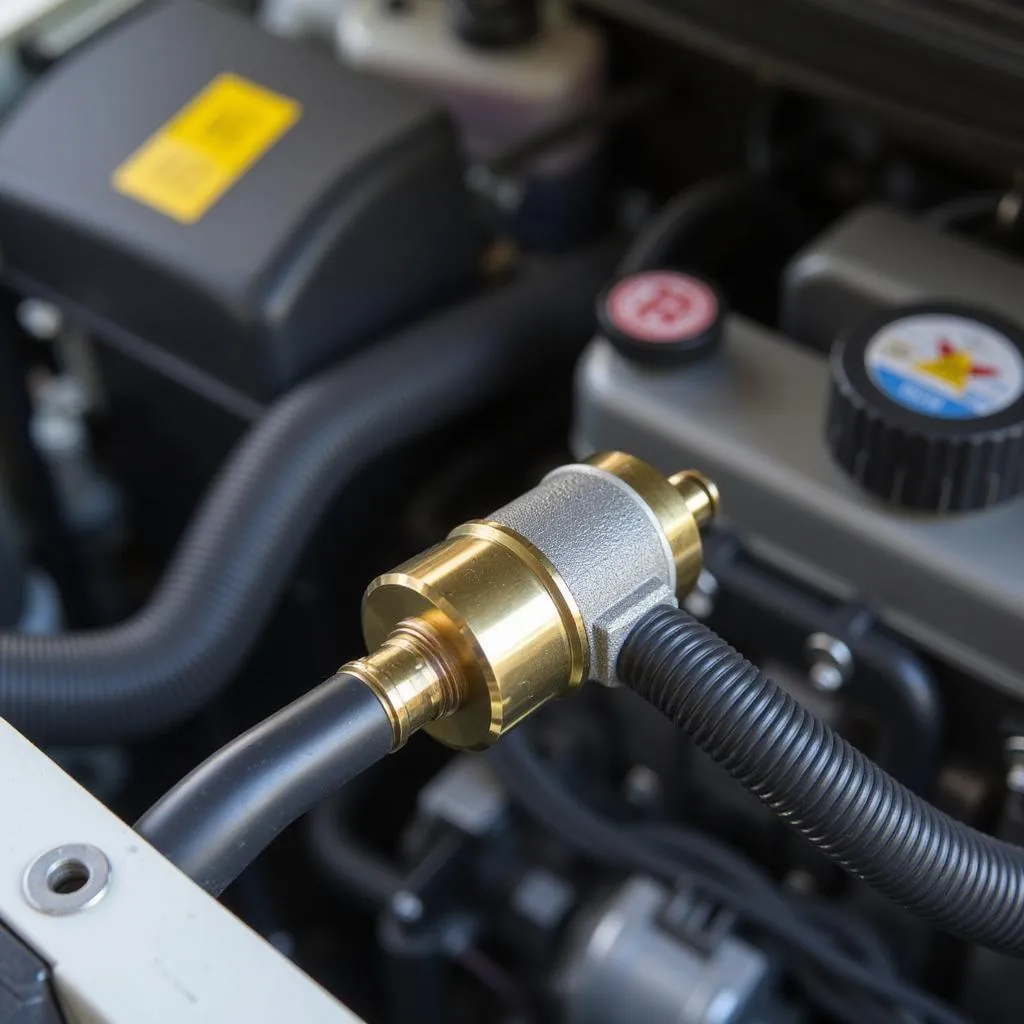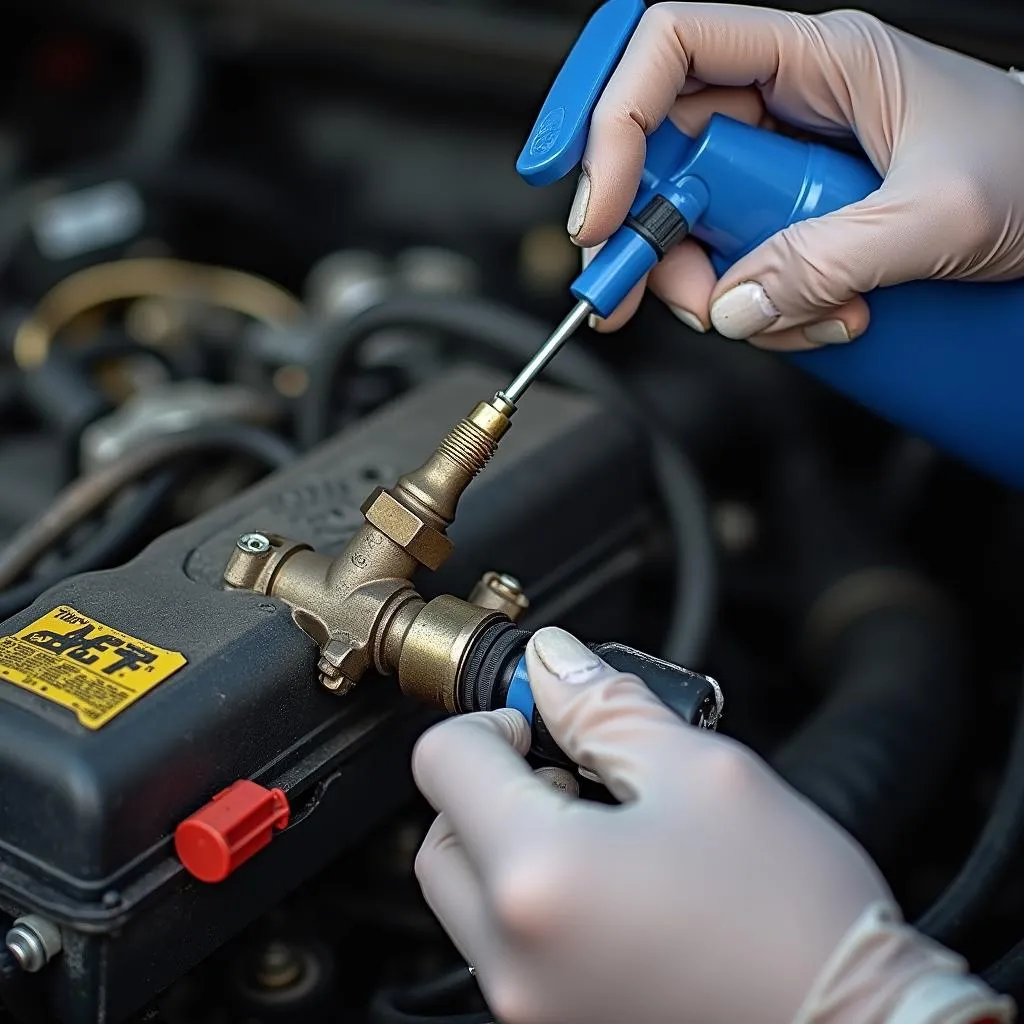Idle speed control is an essential component of modern gasoline engines. It ensures that the engine runs smoothly and stably at idle, i.e., without pressing the accelerator. But what exactly happens with idle speed control, and what problems can arise?
What Does Idle Speed Control Mean?
Simply put, idle speed control regulates the air supply to the engine when the accelerator pedal is not pressed. This ensures that the engine maintains the optimal RPM at idle without stalling or running rough. In the past, this was controlled mechanically via an idle speed screw; today, an electronic control unit handles this task.
 Idle control valve located in a car engine bay
Idle control valve located in a car engine bay
How Idle Speed Control Works
The core of idle speed control is the idle control valve, also known as the Idle Air Control (IAC) valve or idle actuator. This valve is located in the engine’s intake tract and is controlled by the engine control unit (ECU). Based on various sensor data, such as engine temperature, throttle position, and airflow, the ECU calculates the optimal amount of air needed at idle. The idle control valve opens or closes accordingly to regulate the air supply and maintain the desired idle speed.
Common Problems with Idle Speed Control
A common problem is a dirty or defective idle control valve. Deposits in the valve can lead to a rough idle, high or low idle speeds, or even engine stalling. In this case, the idle control valve should be cleaned or replaced.
 Auto mechanic cleaning an idle control valve
Auto mechanic cleaning an idle control valve
Other possible causes for problems with idle speed control include:
- Defective sensors (e.g., throttle position sensor, mass air flow sensor)
- Leaks in the intake tract
- Problems with the oxygen sensor (lambda sensor)
- Faults in the engine control unit (ECU)
Benefits of Functional Idle Speed Control
A correctly functioning idle speed control offers numerous advantages:
- Stable Idle: The engine runs smoothly and evenly at idle.
- Reduced Fuel Consumption: Optimal air supply minimizes fuel consumption at idle.
- Lower Emissions: A stable idle leads to lower pollutant emissions.
- Improved Comfort: The driver enjoys a quiet and comfortable idle without vibrations or jolts.
What to Do About Idle Speed Control Problems
If you notice problems with your vehicle’s idle speed control, it is advisable to visit a workshop or mechanic. An experienced mechanic can determine the cause of the problem using diagnostic tools and perform the necessary repairs.
Looking for support with your car repair? Contact us! We have experienced auto mechanics available to assist you around the clock.
